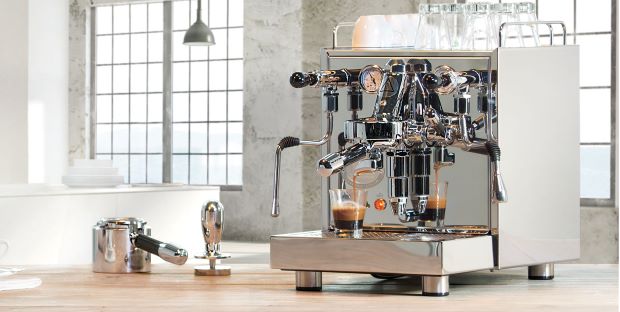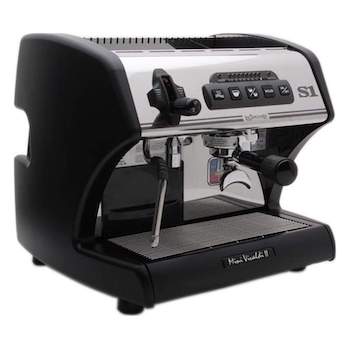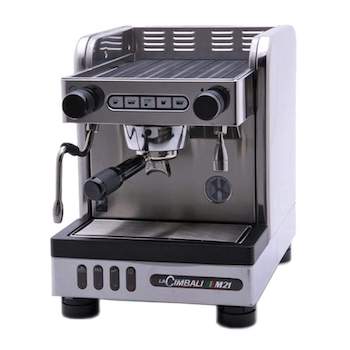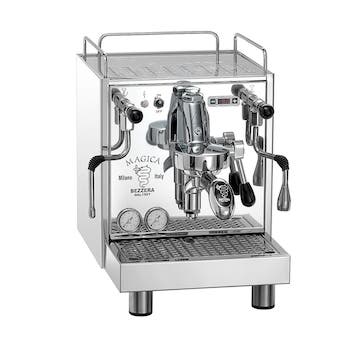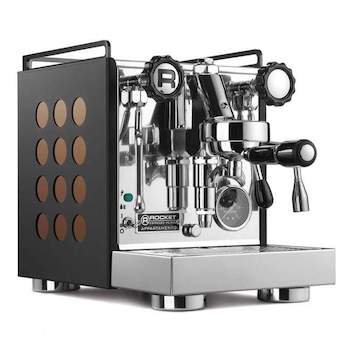Just so you know, as an Amazon Associate we earn from qualifying purchases made via bold red links, buttons or images.
Last Updated on December 9, 2023
With the right techniques and ingredients, you can use prosumer espresso machines to enjoy top-quality coffee right from your home.
When you level up from cheap single-boiler systems, you get a more consistent coffee experience, and more control over the process. You can pull your shots faster and still enjoy the same sophisticated flavor.
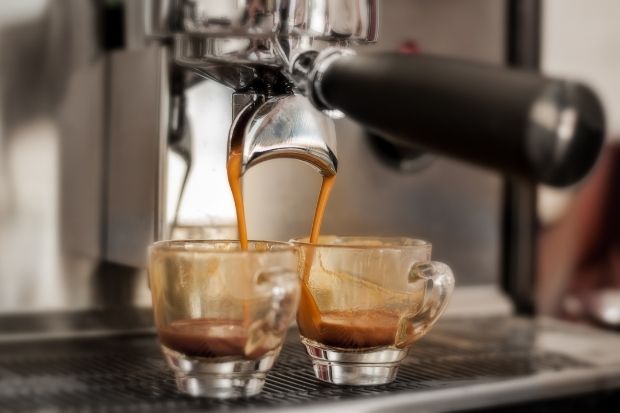
Once you’re ready to make the jump to the prosumer end of the market, you have an important decision to make: heat exchange or dual boiler?
Although there’s overlap between the systems, each type of boiler has its own strengths and weaknesses.
In this post, we’ll help you understand the differences between a heat exchange vs. dual boiler espresso machine and what each espresso system has to offer you.
Heat Exchange vs. Dual Boiler Espresso Machines: How Do These Machines Work?
The main difference between a heat exchange and dual boiler espresso machine is how they handle the different temperatures required for pulling espresso and steaming milk. A heat exchange machine requires you to wait to steam milk after brewing espresso. A dual boiler machine allows you to steam milk immediately because it has dedicated boilers for each.
Espresso is a complicated form of coffee. There’s a precise art to coaxing the right flavors from the beans.
An espresso is a pulled shot of coffee that is brewed by forcing steam under pressure through finely ground coffee beans. You can drink it straight, but it’s often incorporated into drinks that include a cloud of frothy, steamed milk.
Therein lies the problem: in order to make the milk froth properly, that steam temperature needs to be at a higher temperature than the steam forced through the coffee grinds. This can be tricky to achieve, especially for compact or cheaper steam boilers.
How do you shift temperatures quickly and accurately, hitting the perfect number for pulling a shot or steaming milk?
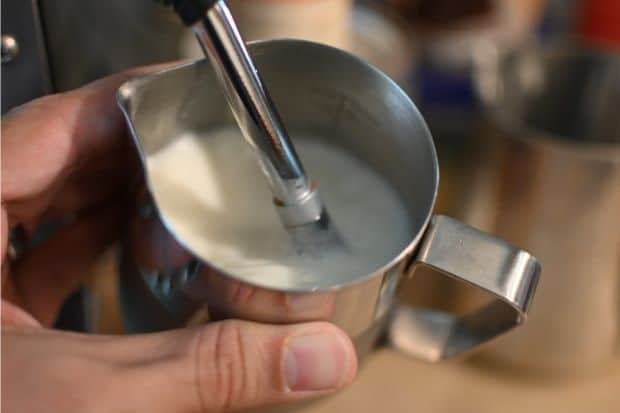
A single boiler espresso machine solves this problem the simple way: with time. You flip a switch and wait for the device’s one and only boiler to hit the coffee extraction temperature. After you’ve pulled your shot, you wait for the hot water to rise to the milk’s steaming temperature (or you can steam the milk first and wait for the machine to cool). But if you want to pull a second shot, you have to repeat the whole process.
Dual boiler machines solve this problem with—you guessed it—two boilers. Coffee and milk are each handled by a separate boiler set to the ideal temperature. There’s no waiting time involved other than for the initial heating process when you first turn the machine on.
Meanwhile, heat exchange boilers solve the temperature issue with additional technology. Instead of making you wait, this style of espresso maker has a heat exchanger inside its one and only boiler. The exchanger adjusts the temperature of the water heading to the group head, getting it to the right setting for pulling an espresso.
You might also see a heat exchange machine referred to as an HX machine.
Those are the basics of how these types of boilers work. Now let’s take a closer look at the pros and cons of these different systems and what they mean for a prosumer looking for an upgrade.
Dual Boiler Espresso Machines
Pros
- You can pull an espresso shot and steam milk simultaneously, allowing you to efficiently knock out a huge number of drinks in a short time.
- Each boiler has its own dedicated heating system, so there’s no downtime as you wait for the machine to hit the right temperature.
- These machines tend to be built for heavy use and can last for many years with just a little care and maintenance.
- Most dual boiler espresso makers give you precise control over brew temperature with a PID system. This opens up a wealth of experimentation options as you play around with how certain beans react to different settings.
Cons
- Dual boilers are firmly on the higher end of the price range. Machines of this quality and durability don’t come cheap.
- These machines are significantly bigger than single boilers. Make sure your countertop can support the size and weight.
- Dual boiler machines take longer (usually about 10 minutes longer) to fully heat up.
- With two boilers, two heating elements, and a more complex mechanism, there’s plenty of opportunity for something to break down. Maintenance and repairs can be more time-consuming and expensive.
- More casual espresso drinkers may not want to struggle with a complex temperature-control system first thing in the morning.
Two of Our Favorite Dual Boiler Machines
Heat Exchange Espresso Machines
Pros
- Unlike a basic single boiler machine, heat exchangers let you extract espresso and steam milk at the same time. These machines allow you to brew several drinks at once, although not at the volume of a dual boiler.
- With just one boiler, the machine is lighter and won’t take up as much counter space.
- Heat exchangers heat up faster than dual boilers.
- These machines tend to be more affordable than dual boilers for the initial cost. You also have fewer parts that can break, meaning on average fewer expenses for maintenance and repairs.
- Heat exchange devices offer many of the same functions of dual boiler style machines.
- These machines give you less precise control over pulling the shot. This is a pro for people who just want reliable, delicious coffee without having to fiddle with multiple settings.
Cons
- If you have a passion for fine-tuning the process to bring out certain flavors from your beans, you may be frustrated by the limited options.
- Heat exchange systems force you to rely on the water temperature the manufacturer programmed in instead of using a PID to customize that setting. This may not be the ideal temperature for your particular beans and roast.
- These machines are sturdy, but don’t tend to be as industrial-strength as a dual boiler.
- Some heat exchange machines have larger temperature swings during the extraction process. If you’re making multiple drinks in a row, you might have to pause your coffee making in order to let the machine catch up.
Two of Our Favorite Heat Exchange Machines
Power vs. Precision
Another important factor when choosing a coffee boiler is whether you place more value on the machine’s power or precision.
A powerful machine refers to the boiler capacity and the power of the heating elements. Powerful machines heat up more efficiently, let you pull multiple shots in a row without running out of water, and steam milk faster.
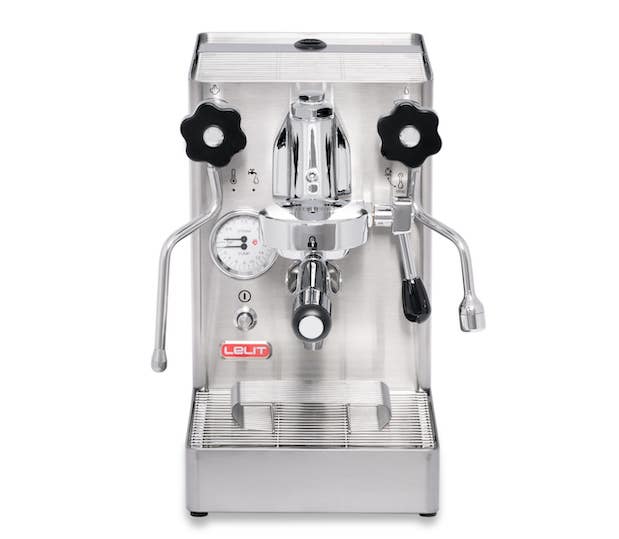
Meanwhile, precise machines offer users exact temperature control, typically within one degree of the target number. This can make a big difference for specific beans or roasts. For example, a dark roast has a smoother, less bitter profile when brewed at 195°F instead of a more typical 200°F. Those five degrees make a huge difference to someone with a sensitive taste palette.
In dual boilers, the tank stays at whatever degree you set it at. During the pull, there’s none of the characteristic temperature drop that heat exchangers have when they’re flushed with water. Interestingly enough, that steady temperature doesn’t necessarily result in the best shot of espresso.
Why? In certain situations, such as with light roasts, you’ll want to prioritize the first delicate flavors that are extracted. A temperature that drops partway through the shot, as is the case with some heat exchange espresso machines, minimizes those final bitter notes.
On the other hand, a consistent temperature tends to get the best results for most medium and dark roasts. This decision comes down to personal taste.
Double boiler machines, with their sophisticated PID control, give the operator a great deal of precision. Does that mean that heat exchange boilers are better for power? Some are, some aren’t. You’ll want to look carefully at the specs before purchasing.
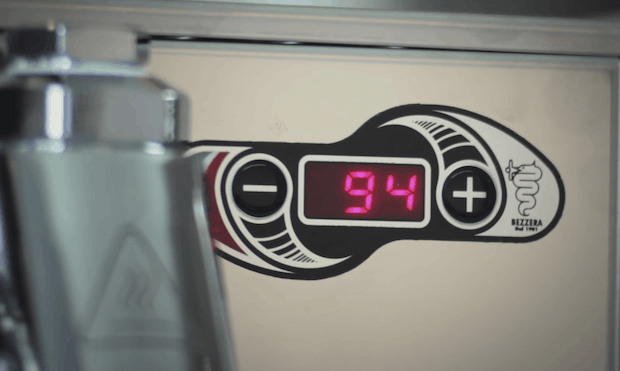
What if you want it all with no compromises? A higher end dual boiler can offer you the holy grail of powerful heating elements and a high capacity coupled with incredible temperature precision.
Unfortunately, high end dual boiler machines with all the bells and whistles can get pricey. Very pricey. At the top of the range, these luxurious espresso brewers cost more than some cars. Prosumers with more modest budgets may need to prioritize certain features over others.
Which Espresso Machine Is Right for You?
There’s a lot of overlap between these machines, but each one has distinct strengths.
To narrow down which type of brew boiler to invest in, ask yourself a few key questions:
- Do you prefer your espresso straight or with milk? If you drink mostly straight shots, a heat exchange system has you covered. People who enjoy more elaborate and milk-based drinks may find the time-saving of a dual boiler the better option.
- Is your coffee machine going to see a lot of use? Dual boiler machines are designed to keep going strong during high use—in busy offices, for instance.
- Are you working with a tight budget? Heat exchanger machines have a generally lower price tag and can be both cheaper and easier to maintain.
- Do you love experimenting with the espresso making process? Dual boilers with PID systems give you additional direct control over the beans (at the risk of unbalancing the flavors if you hit the wrong button). On the other hand, more casual prosumers can get a reliably tasty shot of espresso from heat exchange machines.

